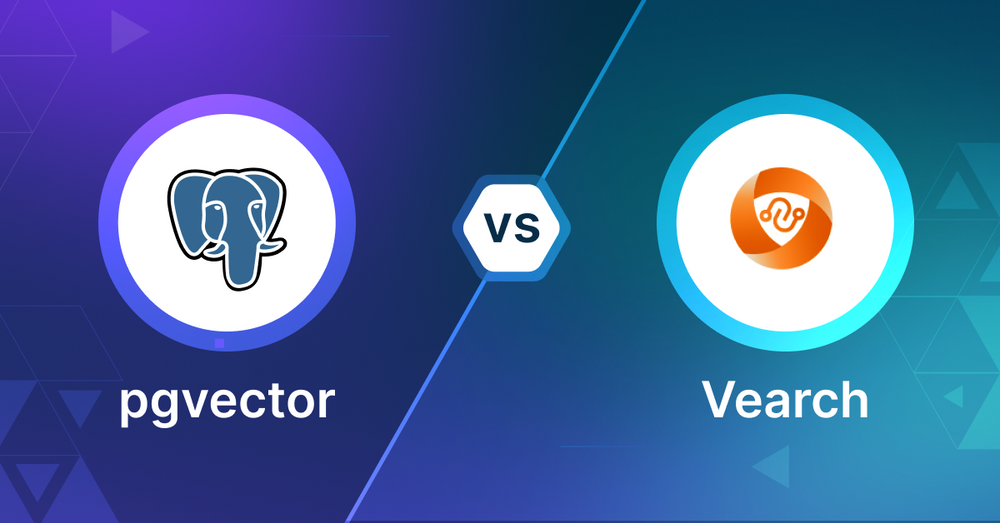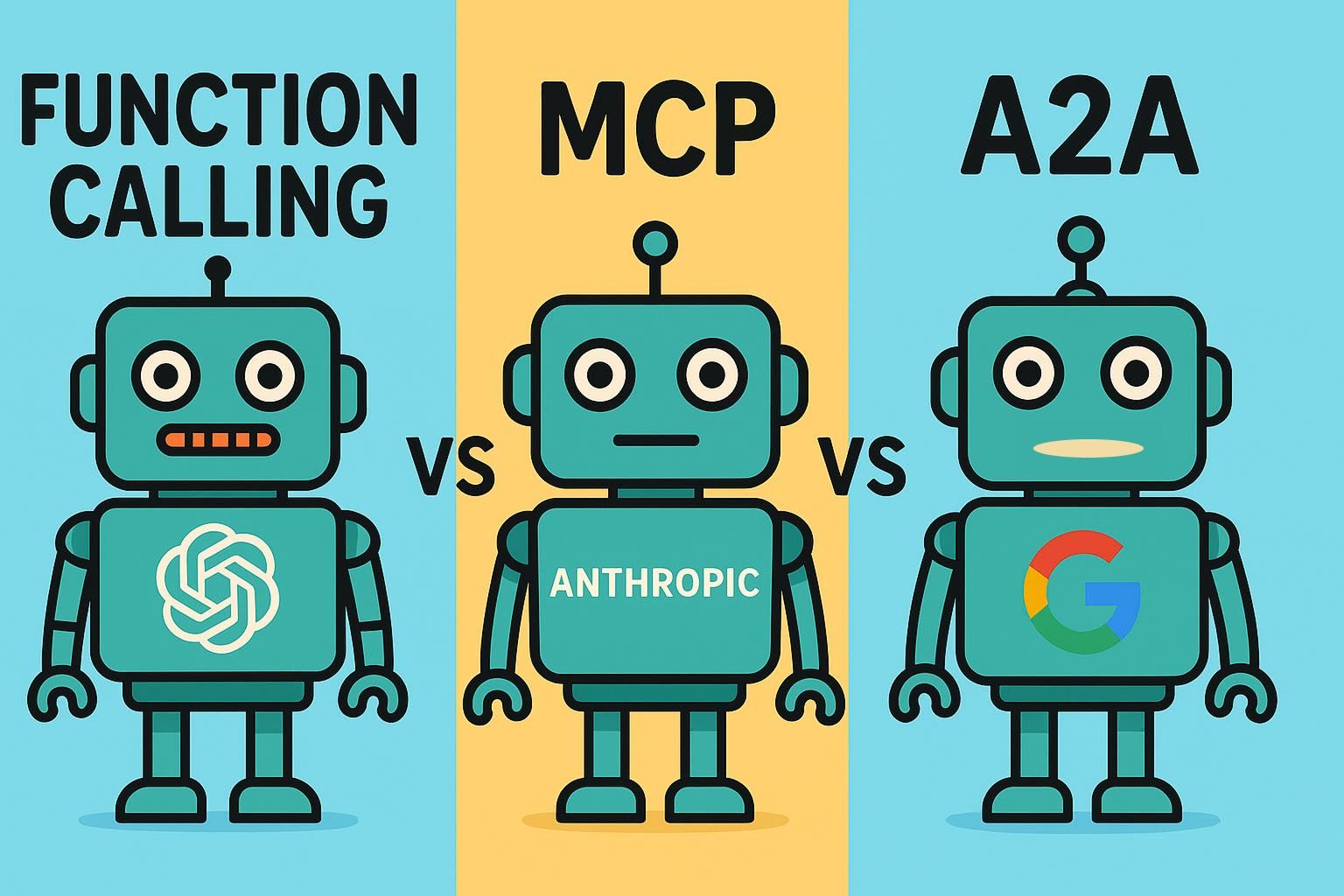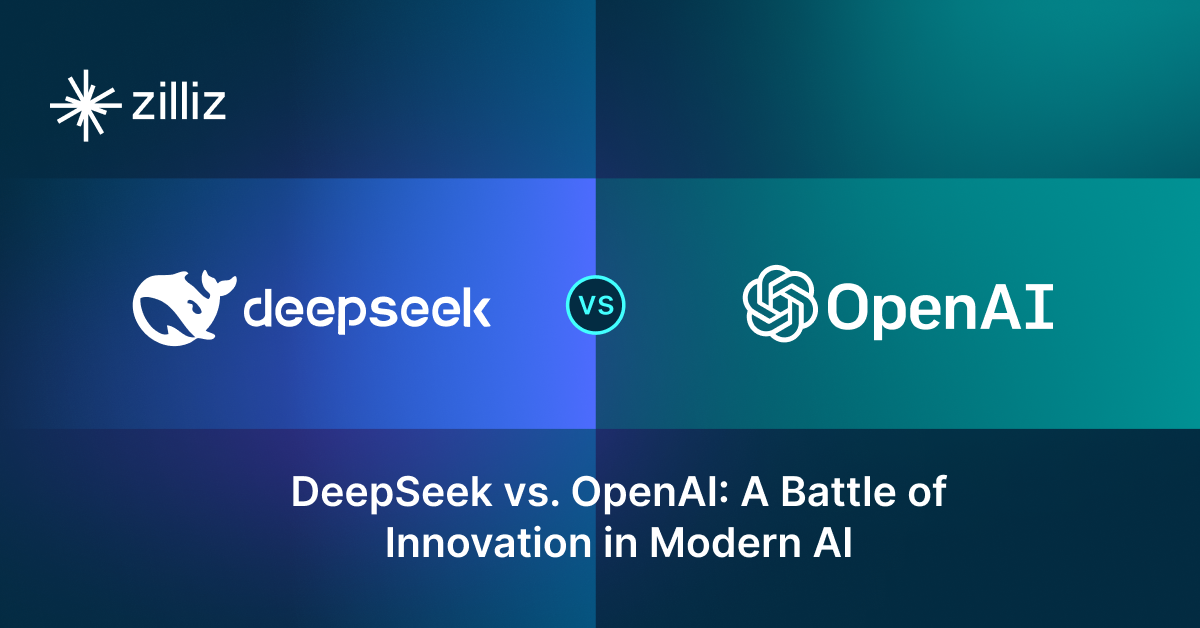pgvector vs Vearch: Choosing the Right Vector Database for Your Needs

As AI and data-driven technologies advance, selecting an appropriate vector database for your application is becoming increasingly important. pgvector and Vearch are two options in this space. This article compares these technologies to help you make an informed decision for your project.
What is a Vector Database?
Before we compare pgvector and Vearch, let's first explore the concept of vector databases.
A vector database is specifically designed to store and query high-dimensional vectors, which are numerical representations of unstructured data. These vectors encode complex information, such as the semantic meaning of text, the visual features of images, or product attributes. By enabling efficient similarity searches, vector databases play a pivotal role in AI applications, allowing for more advanced data analysis and retrieval.
Common use cases for vector databases include e-commerce product recommendations, content discovery platforms, anomaly detection in cybersecurity, medical image analysis, and natural language processing (NLP) tasks. They also play a crucial role in Retrieval Augmented Generation (RAG), a technique that enhances the performance of large language models (LLMs) by providing external knowledge to reduce issues like AI hallucinations.
There are many types of vector databases available in the market, including:
- Purpose-built vector databases such as Milvus, Zilliz Cloud (fully managed Milvus), and Weaviate
- Vector search libraries such as Faiss and Annoy.
- Lightweight vector databases such as Chroma and Milvus Lite.
- Traditional databases with vector search add-ons capable of performing small-scale vector searches.
pgvector is a traditional database with vector search capabilities as an add-on. Vearch is a purpose-built vector database. This post compares their vector search capabilities.
pgvector: Overview and Core Technology
pgvector is an extension for PostgreSQL that adds support for vector operations. It allows users to store and query vector embeddings directly within their PostgreSQL database, providing vector similarity search capabilities without the need for a separate vector database.
Key features of pgvector include:
- Support for exact and approximate nearest neighbor search
- Integration with PostgreSQL's indexing mechanisms
- Ability to perform vector operations like addition and subtraction
- Support for various distance metrics (Euclidean, cosine, inner product)
pgvector, by default, employs exact nearest neighbor search, which guarantees perfect recall but can be slower for large datasets. To optimize performance, pgvector offers the option to create indexes for approximate nearest neighbor search. This approach trades some accuracy for significantly improved speed, which is often a worthwhile tradeoff in many real-world applications.
It's important to note that adding an approximate index can change the results of your queries. This is different from typical database indexes, which don't affect the actual results returned. The two types of approximate indexes supported by pgvector are:
- HNSW (Hierarchical Navigable Small World): Introduced in pgvector version 0.5.0, HNSW is known for its high performance and quality of results. It builds a multi-layer graph structure that allows for fast traversal during searches.
- IVFFlat (Inverted File Flat): This method divides the vector space into clusters. During a search, it first identifies the most relevant clusters and then performs an exact search within those clusters. This can significantly speed up searches in large datasets.
The choice between these index types depends on your specific use case, considering factors like dataset size, required query speed, and acceptable trade-off in accuracy. HNSW generally offers better performance but may use more memory, while IVFFlat can be more memory-efficient but might be slightly slower or less accurate in some cases.
When implementing pgvector in your project, try to experiment with both index types and their parameters to find the optimal configuration for your specific needs. This process of fine-tuning can impact the performance and accuracy of your vector search operations.
Wanna learn how to get started using pgvector? Check out this tutorial!
What is Vearch? Overview and Core Technology
Vearch is a tool for developers building AI applications that need fast and efficient similarity searches. It’s like a supercharged database, but instead of storing regular data, it’s built to handle those tricky vector embeddings that power a lot of modern AI tech.
One of the coolest things about Vearch is its hybrid search. You can search by vectors (think finding similar images or text) and also filter by regular data like numbers or text. So you can do complex searches like “find products like this one, but only in the electronics category and under $500”. It’s fast too - we’re talking searching on a corpus of millions of vectors in milliseconds.
Vearch is designed to grow with your needs. It uses a cluster setup, like a team of computers working together. You have different types of nodes (master, router and partition server) that handle different jobs, from managing metadata to storing and computing data. This allows Vearch to scale out and be reliable as your data grows. You can add more machines to handle more data or traffic without breaking a sweat.
For developers, Vearch has some nice features that make life easier. You can add data to your index in real-time so your search results are always up-to-date. It supports multiple vector fields in a single document which is handy for complex data. There’s also a Python SDK for quick development and testing. Vearch is flexible with indexing methods (IVFPQ and HNSW) and supports both CPU and GPU versions so you can optimise for your specific hardware and use case. Whether you’re building a recommendation system, similar image search or any AI app that needs fast similarity matching, Vearch gives you the tools to make it happen efficiently.
Key Differences
Search Performance and Methods
pgvector offers both exact and approximate nearest neighbor search through HNSW and IVFFlat indexes. Exact search guarantees accuracy but runs slower. For large datasets, the approximate indexes trade some accuracy for speed.
Vearch focuses on hybrid search capabilities, combining vector similarity with traditional filtering. It supports IVFPQ and HNSW indexing methods, with both CPU and GPU implementations available.
Architecture and Scalability
pgvector runs as a PostgreSQL extension, making it ideal if you already use PostgreSQL and want to keep your vector search in the same database. This simplifies your stack but ties scaling to PostgreSQL's capabilities.
Vearch uses a distributed architecture with specialized nodes (master, router, partition server) designed for horizontal scaling. This makes it better suited for applications requiring independent scaling of vector search capabilities.
Integration and Setup
pgvector integrates seamlessly with PostgreSQL, allowing you to use familiar SQL queries and leverage existing PostgreSQL features. If you're already using PostgreSQL, adding pgvector is straightforward.
Vearch operates as a standalone system with its own Python SDK. While this requires managing a separate service, it offers purpose-built features for AI applications and real-time indexing.
When to Choose pgvector
Choose pgvector when you already use PostgreSQL and need vector search capabilities within your existing database infrastructure. It's ideal for applications with moderate data volumes where you want to minimize operational complexity, leverage SQL for vector operations, and maintain a single database system. pgvector works well for use cases like content recommendation, semantic search, or image similarity where exact matches aren't required and you can benefit from approximate nearest neighbor search.
When to Choose Vearch
Vearch is the better choice for large-scale AI applications that need fast hybrid search capabilities and horizontal scalability. Its distributed architecture and GPU support make it suitable for applications processing millions of vectors with millisecond response times. Choose Vearch when you need real-time indexing, complex filtering combined with vector similarity search, or when your use case demands independent scaling of vector search capabilities.
Conclusion
pgvector shines in its PostgreSQL integration and simplicity, making it perfect for teams wanting to add vector search to their existing PostgreSQL setup. Vearch excels in scalability and hybrid search capabilities, making it ideal for dedicated AI applications. Your choice should depend on your current infrastructure, scale requirements, and whether you need features like real-time indexing or GPU acceleration. Consider your team's expertise with distributed systems versus traditional databases when making the decision.
Read this to get an overview of pgvector and Vearch but to evaluate these you need to evaluate based on your use case. One tool that can help with that is VectorDBBench, an open-source benchmarking tool for vector database comparison. In the end, thorough benchmarking with your own datasets and query patterns will be key to making a decision between these two powerful but different approaches to vector search in distributed database systems.
Using Open-source VectorDBBench to Evaluate and Compare Vector Databases on Your Own
VectorDBBench is an open-source benchmarking tool for users who need high-performance data storage and retrieval systems, especially vector databases. This tool allows users to test and compare different vector database systems like Milvus and Zilliz Cloud (the managed Milvus) using their own datasets and find the one that fits their use cases. With VectorDBBench, users can make decisions based on actual vector database performance rather than marketing claims or hearsay.
VectorDBBench is written in Python and licensed under the MIT open-source license, meaning anyone can freely use, modify, and distribute it. The tool is actively maintained by a community of developers committed to improving its features and performance.
Download VectorDBBench from its GitHub repository to reproduce our benchmark results or obtain performance results on your own datasets.
Take a quick look at the performance of mainstream vector databases on the VectorDBBench Leaderboard.
Read the following blogs to learn more about vector database evaluation.
Further Resources about VectorDB, GenAI, and ML
- What is a Vector Database?
- pgvector: Overview and Core Technology
- What is Vearch**? Overview and Core Technology**
- Key Differences
- **When to Choose pgvector** 
- **When to Choose Vearch** 
- **Conclusion** 
- Using Open-source VectorDBBench to Evaluate and Compare Vector Databases on Your Own
- Further Resources about VectorDB, GenAI, and ML
Content
Start Free, Scale Easily
Try the fully-managed vector database built for your GenAI applications.
Try Zilliz Cloud for FreeKeep Reading

Build for the Boom: Why AI Agent Startups Should Build Scalable Infrastructure Early
Explore strategies for developing AI agents that can handle rapid growth. Don't let inadequate systems undermine your success during critical breakthrough moments.

The Great AI Agent Protocol Race: Function Calling vs. MCP vs. A2A
Compare Function Calling, MCP, and A2A protocols for AI agents. Learn which standard best fits your development needs and future-proof your applications.

DeepSeek vs. OpenAI: A Battle of Innovation in Modern AI
Compare OpenAI's o1 and o3-mini with DeepSeek R1's open-source alternative. Discover which AI model offers the best balance of reasoning capabilities and cost efficiency.
The Definitive Guide to Choosing a Vector Database
Overwhelmed by all the options? Learn key features to look for & how to evaluate with your own data. Choose with confidence.